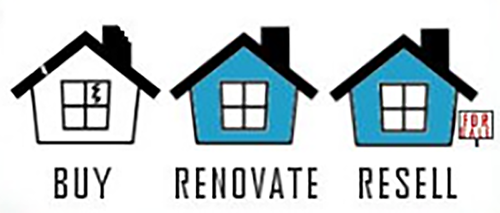 The key trends in California real estate investing are a high level of competitiveness, maximizing density, and, like everywhere else, low supply coupled with high demand for house buying. However, there are some key differences between the real estate sector in California and real estate investing everywhere else.
The key trends in California real estate investing are a high level of competitiveness, maximizing density, and, like everywhere else, low supply coupled with high demand for house buying. However, there are some key differences between the real estate sector in California and real estate investing everywhere else.
Home Values in the San Joaquin Valley Versus the Broader East Bay Area
Real estate in California is expensive. For that reason, prices are not rising as rapidly as they are in other parts of the country. But for serious real estate investors, it’s a great place for investing right now. In terms of investment affordability, San Joaquin Valley houses are better than East Bay real estate.
“Anything on that side of the hill,” Nick Roberson, Sharestates sales director of the West Coast region said, “even for a small house, is upwards of a million dollars. I’m not even talking about a big house. Just an average house.”
Roberson offices in Tracy, a part of the Stockton-Lodi-Tracy Metropolitan Statistical Area (MSA) and the second-most populous city in San Joaquin County (Stockton is the first), which is a part of the broader San Jose-San Francisco-Oakland Combined Statistical Area (CSA). The Bay area itself is home to 7.75 million people and is the second-largest CSA in California. On top of that, the area is growing as people are moving to the valley from the Bay area to take advantage of the less expensive real estate.
“In my area,” Roberson said, “houses are $750,000 to over $1 million. Older houses go for the upper $400,000s and up.”
In other areas along the valley corridor, from Sacramento to Bakersfield, real estate can be less because the clientele is different. That includes smaller cities like Fresno, Modesto, Merced, Porterfield, and Hanford. In those locations, homes can go for $200,000 to $400,000. Roberson said that’s the ideal range for house flippers and fix-and-hold investors.
The high value of the real estate in the East Bay area makes it difficult for rental property owners because the 1 percent rule doesn’t apply. That doesn’t mean rental property owners have no opportunities. The area is growing and many people can’t afford to buy homes, so there will be renters. But calculating monthly rent is more challenging and leads many investors to modify the 1 percent rule or use another metric for determining monthly rent and mortgage costs.
Another factor contributing to the real estate climate in the East Bay area is that houses are flying through the closing process. Homes are selling in days for near $1 million, or more, and for cash. It’s an exciting time to be a real estate investor in California.
Hot Competition in the Rental and Fix-and-Flip Markets
The rental market in California is a tough gig, but not impossible. Renters enjoyed a long period of not having to pay rent due to COVID-19. That hurt some rental property owners, but there are a lot of real estate owners who can buy houses with cash and rent them out. That makes it harder for young people with little cash to try to buy new houses.
Homebuyers ready to make a large down payment have to close fast because it’s not uncommon for a large cash buyer to squeeze in before the closing date and pull the rug out.
“A lot of purchase transactions go sideways because the seller doesn’t want to wait for the financing approval process to go the course,” Roberson said. It takes a few days for the lending process to settle, but a seller could have three, four, or as many as six backup cash offers. A bird in the hand is worth two in the bush.
Still, there are plenty of opportunities for real estate investors who aren’t entirely liquid. If you want to leverage the properties you own to buy more, fix-and-flips are a great alternative throughout the valley. California is also passing new legislation that addresses the housing shortage and one bill, which has already been passed, allows builders to add living units to sites that previously did not qualify for add-ons. As a result, existing properties are getting bigger making them more marketable and, in some cases, developers are tearing down existing houses and rebuilding bigger units on the site.
One problem with fix-and-flipping in the East Bay area and some parts of Los Angeles is that real estate is so upscale that it’s difficult to add value to the property. The only way to increase a home’s value was to add to the house. Now, investors can do that more easily.
Real estate investors taking advantage of this new environment are, more often, tearing down the existing house on a site and building from the ground up, but they’re building in such a way as to maximize density. Every municipality has different zoning requirements, so developers are building the largest allowed units and the most units allowable in whatever jurisdiction they’re operating in.
“If they’re allowed to build four units, they’ll build four,” Roberson said. “If they can only build two, they’ll build them bigger to make them more attractive.” If they have, they’ll stack the units and go higher.
Another fix-and-flip strategy Roberson sees becoming more prevalent in the San Joaquin Valley area is the building of accessory dwelling units (ADUs). Investors take an existing property, give it a little facelift, then add smaller, independent living quarters on the back of the property somewhere. These are very popular among extended families living together, and California has a lot of those.
When it comes to the rental and fix-and-flip markets in California, there is a lot of competition and the strategies are unique.
Marketplace Lending Will Beat Conventional Lending
Throughout San Joaquin Valley, ground-up builds are still prevalent because of migration from the East Bay. There just isn’t enough housing for everyone, so they’re trying to build more. In and around San Francisco, there isn’t much raw land. Therefore, to build, you’ve got to tear something down.
The climate is so hot that investors are peaking around corners and using their networks to secure off-market deals. Cheap apartment deals, small complexes, single-family rentals, anything they can get their hands on. If they can fix and flip it, they will. If they can fix and hold, they’ll do that too to maintain some passive income. The market is very balanced.
In Washington state, they have similar issues. It’s not as populated and there’s more land, but the real estate is expensive. And Washington doesn’t have as many large cities as California. That means a lot of the real estate deals are in rural areas.
The future of real estate investing all along the West Coast is bright. Roberson believes marketplace lending will lead the next cycle.
“Conventional lenders are going to take a hit soon,” he said. “That will make marketplace lending more vibrant because investors will get better deals and more opportunities.”
Specifically, Roberson believers fix-and-flip investors and rental property investors will benefit from marketplace lending more than from conventional lending. Even if lending rates go up, investors will get better deals on the price of money by borrowing from their peers as opposed to conventional financial institutions. And many investors in California right now are building their portfolios with cash. They’ll have plenty of money to lend.
Another benefit to marketplace lending is that it isn’t saturated. There are plenty of opportunities in the California market and successful investors are stockpiling their cash. Roberson has one more bit of advice for real estate investors ready for their next deal.
“Find a reputable private lender with a good foundation, who has realized some growth, and that understands what you’re trying to do,” he said. “Partner with them instead of the guy on the street with a bag of money who only cares about the deal.”
In other words, there’s nothing more important than building a relationship with someone who cares about you and your goals.
Are you a real estate investor looking for your next big opportunity in California? Get in touch with Nick Roberson today.




